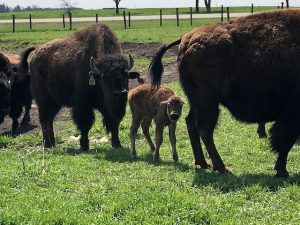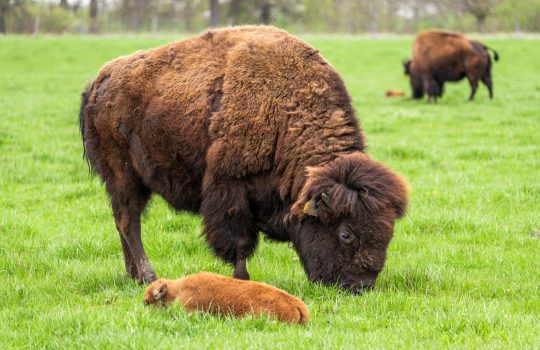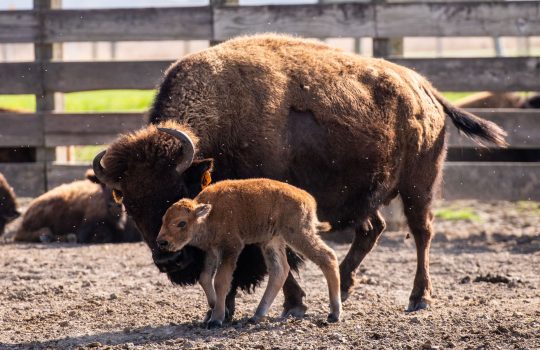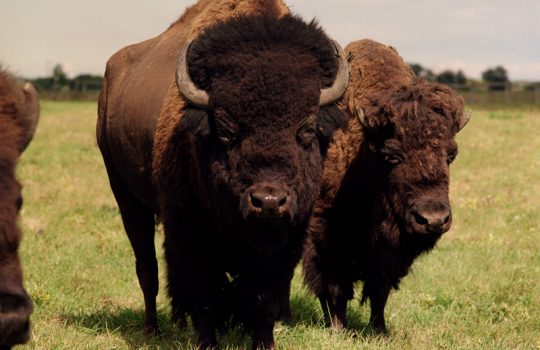On April 28, baby bison season officially began. The first calf of the year was born in the late morning, and mother and baby are doing well.
Fermilab is expecting between 12 and 14 new calves this spring.
Fermilab’s first director, Robert Wilson, established the bison herd in 1969 as a symbol of the history of the Midwestern prairie and the laboratory’s pioneering research at the frontiers of particle physics.
And thanks to the science of genetic testing, Fermilab has confirmed that the laboratory’s herd shows no evidence of cattle gene mixing. Farmers during the early settlement era would breed bison with cattle in an attempt to create more tame bison or more hardy cattle.
A herd of bison is a natural fit for a laboratory surrounded by nature. Fermilab hosts nearly 1,000 acres of reconstructed tallgrass prairie, as well as remnant oak savannas, marshes and forests.
To learn more about Fermilab’s bison herd, please visit the section on wildlife at Fermilab on our website.
The entire Fermilab site in Batavia is closed to the general public at this time, so visits to view the bison are not currently possible. Updates will be posted on the Visit Fermilab webpage. Learn more about Fermilab’s science and people by following Fermilab’s social media pages @Fermilab.
The Fermilab site has been designated a National Environmental Research Park by the U.S. Department of Energy. The lab’s environmental stewardship efforts are supported by the Department of Energy Office of Science as well as Fermilab Natural Areas.
Fermilab is supported by the Office of Science of the U.S. Department of Energy. The Office of Science is the single largest supporter of basic research in the physical sciences in the United States and is working to address some of the most pressing challenges of our time. For more information, visit science.energy.gov.




